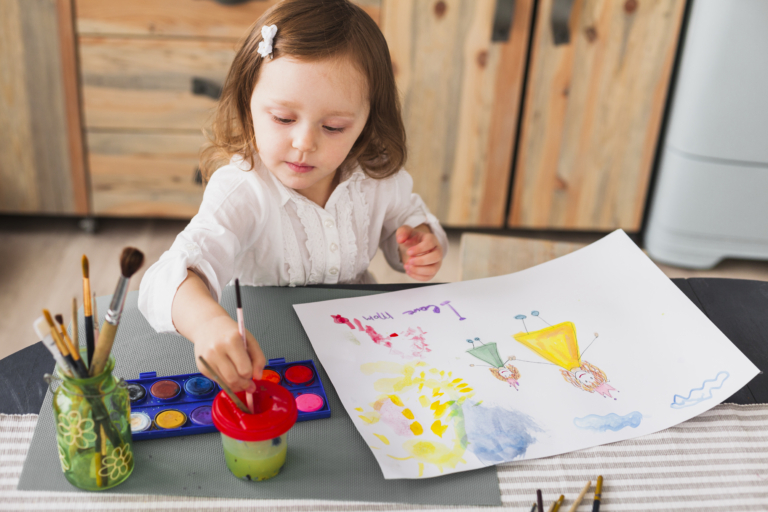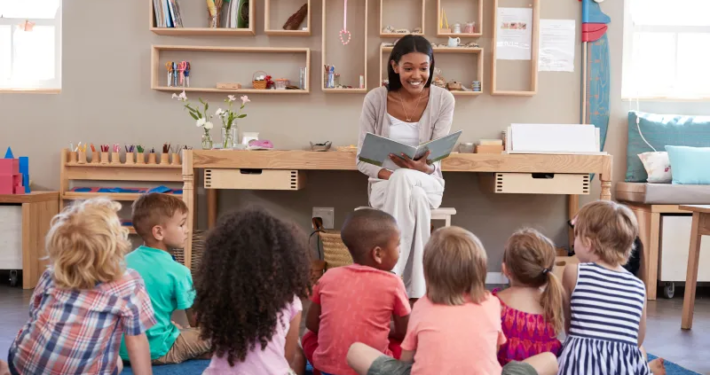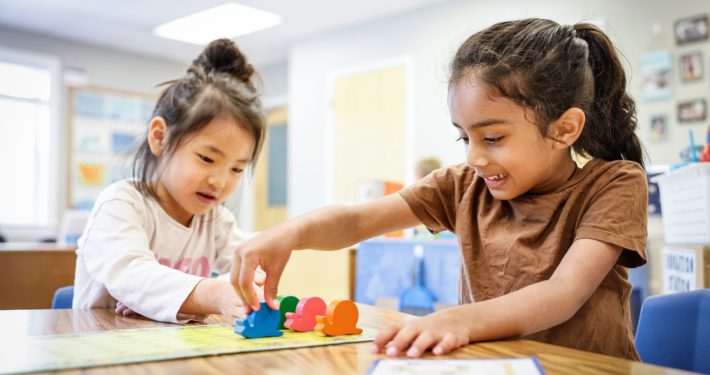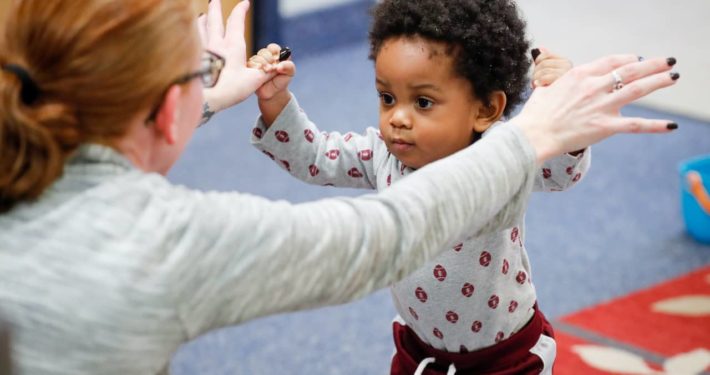Art is one of the most powerful ways young children learn. When toddlers, preschoolers, and pre K learners paint, sculpt, draw, design, and get messy with materials, they are not just making art. They are building creativity, imagination, fine motor skills, confidence, and a strong foundation for school readiness. Every splash of paint and twist of clay gives children a chance to make choices, solve problems, express emotions, and communicate ideas in their own unique way.
Play based art invites children to experiment freely without worrying about right or wrong. They try new tools, test different textures, mix colors, take risks, and follow their curiosity. Along the way, they develop language, coordination, focus, and a growing sense of identity as they proudly create something that is truly their own.
The activities below turn creative play into joyful learning, nurturing the whole child while celebrating imagination, independence, and self expression.
3D Art Sculpture
Create a Styrofoam-Based Sculpture
You can introduce this activity to your child by reminding them of sculptures they may have seen in their community. Give your child a piece of Styrofoam to use as the base of the sculpture. Show your child all the different materials they can use to build their sculpture. Encourage your child to share their ideas about how they will create their sculpture. As your child tests their ideas, encourage your child to share what they have discovered with you.
Steps
- Remind your child of sculptures they have seen in the community.
- Provide a Styrofoam base.
- Offer a variety of materials to attach to the sculpture.
- Encourage your child to discuss their design ideas.
- Ask them to share discoveries as they experiment.
Materials
Construction paper strips, glue, tape, staples, pipe cleaners, Styrofoam, paper, pencils, markers, pom-poms, beads, assorted household materials
Age-Appropriate Adaptations
- Two-year-olds — Provide fewer, easier-to-use materials such as pipe cleaners and Styrofoam only.
- Three-year-olds — Ask your child to name the colors they used in the sculpture.
- Four-/Five-year-olds — Challenge your child to draw a picture of their sculpture when finished.
Skills Supported
Aesthetic appreciation, creativity, fine motor skills, tool usage
Book Making — Make It. Write It. Read It.
Children Create Their Own Books
A variety of books can be made, including peek-a-boo books, pop-up books, shape books, accordion books, and flip books. Provide examples of differently constructed books. Explain tools and techniques. Encourage your child to draw pictures on each page. Have your child dictate their thoughts about the picture and write as much as they can under each illustration. Remember that picture-only books are still stories.
Steps
- Show examples of different book types.
- Explain tools and construction methods.
- Invite your child to draw pictures on each page.
- Encourage dictation and write under illustrations.
- Reinforce that picture-only books are still stories.
Materials
Colored paper, markers, scissors, glue
Age-Appropriate Adaptations
- Two-year-olds — Provide a blank book that has been pre-constructed and allow children to finish it.
- Three-year-olds — Encourage choosing the book style and labeling characters.
- Four-/Five-year-olds — Encourage creating personalized themes and shapes.
Skills Supported
Language development, fine motor skills, critical thinking, aesthetic appreciation
Bubble Wrap Painting (Artwork with a POP)
Create Printed Artwork from Bubble Wrap
Spread bubble wrap out and add washable paint. Allow your child to paint the bubble wrap, then place a sheet of paper on top to create a print.
Steps
- Place bubble wrap on the table.
- Add washable paint and let your child paint directly on it.
- Press a sheet of paper on top to create a print.
- Lift slowly to reveal the artwork.
Materials
Bubble wrap, paint, paper, paintbrush
Age-Appropriate Adaptations
- Two-year-olds — Explore textures and compare bubble wrap to traditional bubbles.
- Three-year-olds — Use different bubble wrap sizes and compare popping sounds.
- Four-/Five-year-olds — Cut bubble wrap into shapes and stamp repeated patterns.
Skills Supported
Fine motor skills, creativity, sensory discovery
Jackson Pollock Painting — Paint, Brush, Action!
Action-Style Canvas Painting
Allow children to dip paint brushes into paint and splash it onto paper or canvas. Encourage full-body movement while painting.
Steps
- Dip paintbrushes into paint.
- Splash or drip paint onto the paper or canvas.
- Encourage movement while painting.
- Talk about the artwork afterward.
Materials
Paint, paintbrushes, paper or canvas
Age-Appropriate Adaptations
- Two-year-olds — Explore colors and practice dripping paint.
- Three-year-olds — Pick colors and narrate what their painting means.
- Four-/Five-year-olds — Watch a short video about Pollock and describe artwork using descriptive or feeling words.
Skills Supported
Understanding art styles, motor control, emotional expression, creativity
Picasso Self-Portrait — Express Yourself!
Abstract Self-Portrait Inspired by Picasso
Make self-portraits using magazine cutouts, printed photos, or painting. Encourage children to explore silliness, color, perspective, and facial shapes.
Steps
- Provide magazines, printed photos, or painting supplies.
- Invite your child to create a self-portrait abstractly.
- Encourage exploration of colors, shapes, and facial features.
- Display artwork and talk about what makes it unique.
Materials
Paper, magazines, printed photos, glue, scissors
Age-Appropriate Adaptations
- Two-year-olds — Use pre-cut images and introduce the idea of abstract art.
- Three-year-olds — Draw themselves, cut the drawing, and reassemble in an abstract style.
- Four-/Five-year-olds — Watch a clip about Picasso and paint an abstract self-portrait while looking in a mirror.
Skills Supported
Art appreciation, vocabulary building, identifying feelings, creativity, fine motor skills
Looking for more activities?
If your child enjoyed these art activities, there is so much more to explore. Children learn best when they can move, create, experiment, problem-solve, read, build, and play.
Continue the fun and support early learning across every developmental area with science activities, math activities, literacy activities, cooking activities, and social emotional learning ideas.
→ Explore all the activities for kids recommended by our experts
Why Art Activities Matter for Toddlers, Preschoolers, and Pre K Learners
Art in early childhood is more than a finished project. It is a powerful way for young children to explore ideas, express feelings, and build skills that support school readiness and lifelong learning. When children paint, draw, sculpt, collage, and experiment with materials, they are developing creativity, language, motor skills, and confidence in who they are.
• Art builds creativity, imagination, and self expression.
Open ended art experiences give children space to make choices, explore materials, and communicate ideas in their own way, which supports creative thinking and personal expression (NAEYC).
• Art supports fine motor development and early writing skills.
Grasping crayons, pencils, chalk, paintbrushes, scissors, and small materials strengthens the small muscles in the hands and fingers that children need for writing, buttoning, and other daily tasks (msu.edu).
• Art connects to cognitive, language, and thinking skills.
Talking about their artwork, planning designs, solving problems with materials, and telling the stories behind their creations build vocabulary, visual and verbal literacy, and higher level thinking (Common Play).
• Art nurtures social emotional development, confidence, and self regulation.
Art gives children a safe way to explore feelings, make choices, persist with challenges, and feel proud of their work, which supports emotional resilience and a positive sense of self (NAEYC).
What This Means for Families
Simple materials like paper, crayons, recycled boxes, magazines, glue, and paint can open up a world of creativity. When children cut, glue, scribble, stamp, paint, or build, they are doing much more than keeping busy. They are practicing focus, problem solving, and self expression.
Art time is also a natural opportunity for conversation. Asking questions like “Tell me about your picture,” “What did you notice while you were painting,” or “How did you decide to use those colors” helps children build language, confidence, and pride in their own ideas. There is no right or wrong way to create art. The process matters more than the product.
With simple, regular art experiences, families can support:
✔ creativity and imagination
✔ fine motor and early writing skills
✔ language, storytelling, and thinking skills
✔ emotional expression, confidence, and self regulation
Every time a child experiments with color, shape, texture, or design, they are learning more about themselves and the world.
Daily Creativity and Artful Learning with Cadence Education
At Cadence Education, art is an essential part of how children learn and grow. Our classrooms give children time and space to paint, draw, build, explore textures, and create original works that reflect their ideas and feelings. Through these art experiences, children build confidence, fine motor skills, language, and imagination in a setting where creativity is celebrated.
We would love to meet your family and learn more about your child’s interests, strengths, and unique creative voice.





